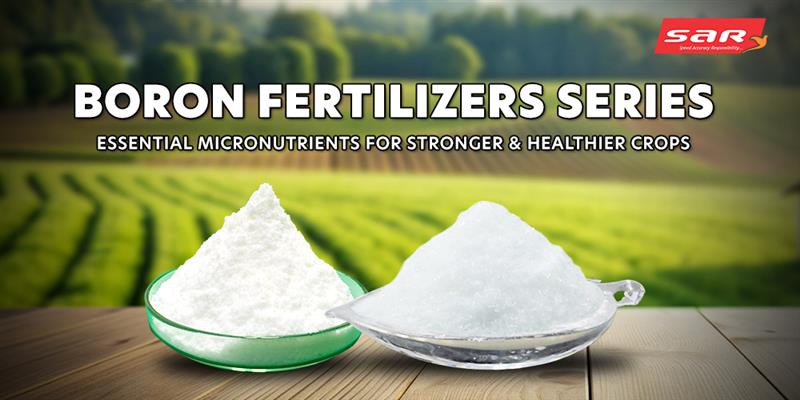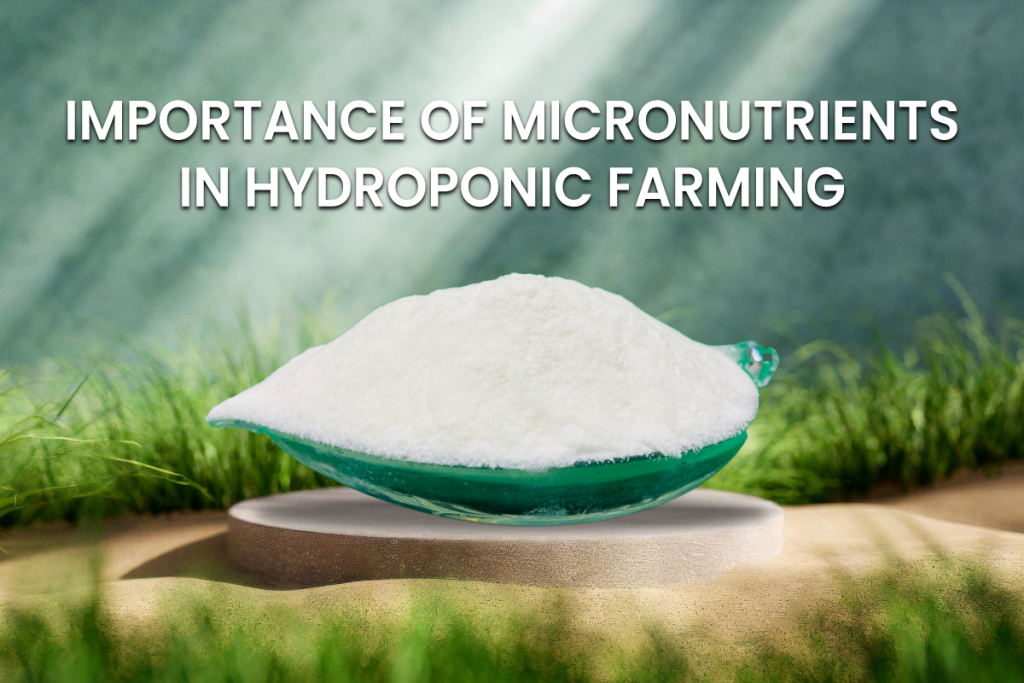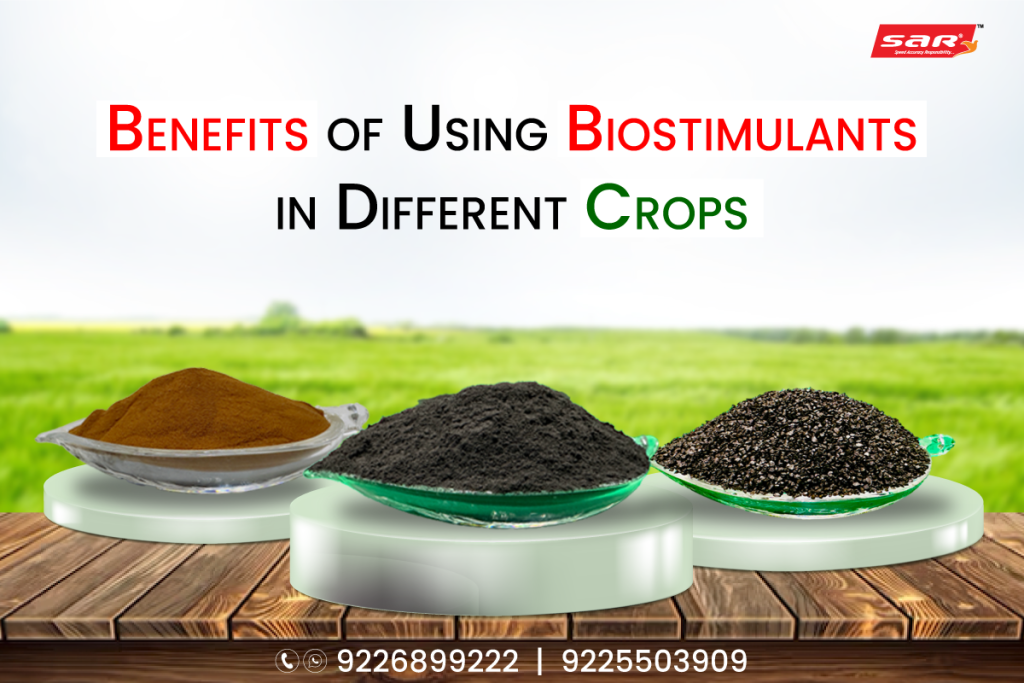
Boron fertilizer may only be required in small quantities, but its effects are huge. Grown in conjunction with many other nutrients to improve yield, enhance quality, and stress in crops, boron is a micronutrient that plays a behind-the-scenes role in cell development to seed formation. When deficient, the effects can be dramatic — flower drop, poor fruit set, hollow stems, cracked fruits and underdeveloped seeds.
To overcome this, growers utilize Boron Fertilizer Series, which is composed of:
DOT (Boron 20% (Disodium Octaborate Tetrahydrate)
Borax Decahydrate (10.5% B)
Borax Pentahydrate (15% B)
Boric Acid (17.5% B)
What Are These Products?
Boron 20% (DOT)
A modified high efficient boron fertilizer.
Contains 20% elemental boron.
High water solubility; suitable for foliar spray, drip fertigation, or combination with NPK.
Very low salt index—harmless to leaves and roots.
Great performance through a variety of soil types.
Borax Decahydrate (10.5% B)
Sodium borate mined from nature.
10.5% Elemental Boron.
Preferred for basal application or soil mixing.
Most suitable for long duration crops like sugarcane, banana and paddy.
Borax Pentahydrate (15% B)
Contains more boron per kg than decahydrate.
Better solubility—solid balance for pre-plant and soil application.
Best suited for neutral to slightly alkaline soils.
Boric Acid (17.5% B)
A homogeneous form, which has an extremely high solubility of water.
Has 17.5% elemental boron.
Answer: Best for fast deficiency correction, especially through foliar spray or drip systems.
pH just slightly acid—good in high-pH soils.
Why Boron Is So Important to Crops
| Function | What It Does |
| Cell Wall Formation | Strengthens plant tissues and structure |
| Reproductive Growth | Helps in pollen tube elongation, fruit & seed set |
| Sugar Transport | Assists in translocation from leaves to roots/fruits |
| Nutrient Balance | Improve uptake & efficiency of calcium & magnesium |
| Hormone Regulation | Influences auxins & root growth |
Best for fast correction of deficiency, particularly as a foliar spray or through drip systems.
Slightly acid—good in high pH soils.
Benefits of Boron Fertilizers
Promotes Flowering & Fruit Set: You’ll successfully pollinate flowers and create seeds.
Enhances Root Development: Strong roots are essential for proper absorption of water and nutrients.
Improves Fruit Quality: Helps decrease internal blackening, cracking, and deformities.
Fluid More Potent Than Water Reaches 1,001 Benefits Increases Drought Tolerance: Supports membrane stability during water stress.
Increases Oil Yield in Oilseeds: Mustard, Sesame, Sunflower
A boron-deficient crop will look green and healthy but experience significant losses due to lack of grain fill, hollow stems, or empty pods.
Impact on the Farm
| Crop Group | Boron Effect |
| Vegetables | Prevents hollow stems, internal browning |
| Fruit | Cracking Fruit improves shape, sweetness & shelf life |
| Oilseeds | Enhance Oil quality & seed formation |
| Cereals | Aid in tillering & seed set |
| Legumes | Boost nodulation & nitrogen fixation |
In boron-deficient soils (widespread in sandy or calcareous areas), yields can be reduced by 30–50%, often without any visible early symptoms.
When to Use Boron Fertilizers
Soil Preparation Before Sowing: Borax for Long Term Supply
Boron: It is used for strengthening roots and stems during the vegetative phase.
Age Lozenge & Shooting Stage: Most important time – Use DOT or boric acid, foliar boron sources.
Post Heavy Rain: Apply light foliar dose of boron in sandy or leached soil.
Frequency: For high-demand crops, the split application works best, half to the soil, half as foliar.
Application and Dosage Instructions
| Method | Product Type | Rate |
| Soil Application | Borax Deca/Penta | 10 – 20 kg/ha |
| Foliar Spray | DOT / Boric Acid | 0.1–0.2% solution (1–2 kg/ha) |
| Fertigation (Drip) | DOT / Boric Acid | 0.5–1.5 kg/ha |
| Seed Coating (if applicable) | Boron 20% | Light coat, ~100 g/100 kg seed |
Deficiency of Boron is as dangerous as its toxicity. Do not use repeatedly without testing it out.
Examples of Market Products
| Product Type | Brand Names |
| Boron 20% (DOT) | Solubor, Borostar 20, Borofast |
| Borax Decahydrate | Classic Borax, Fertibor |
| Borax Pentahydrate | Highbor 15, Borolux, AgriBor Penta |
| Boric Acid | Boroquick, FastBor, HiSol |
That said, always check label claims and compatibility for crop stage and soil pH.
Getting the Ball Rolling: The Secret Power of Boron
Mitosis & Meristem Activity: Boron stores in growing points—deficiency ceases tip expansion.
On Oilseeds: Perceivable boron deficiency causes loss in oil content and pod setting.
In Fruit Crops: Sugar movement and fruit size (grapes, guava, apple, watermelon)
Zinc & Calcium Synergy: Co-application promotes nutrient pairing efficiency and plant resilience.
Boosts Structural Defense: Boron fortifies plant tissues, reducing vulnerability to disease attack.
Less Flower Drop: Important for crops like cotton, chili and tomato whose yield depends on fruit retention.
Key Outcome: Micronutrient with Macro Value
And Boron Fertilizer Series has a customized solution for every crop and soil environment. Long-release Borax, fast-acting Boric Acid, and all-in-one DOT help farmers increase yield, improve the structure of plants, and increase the quality of food.
When used strategically, boron transforms from niche micronutrient to a BFD in contemporary agronomy.
Last Tip:
Make boron part of your nutrient plan, not an after



